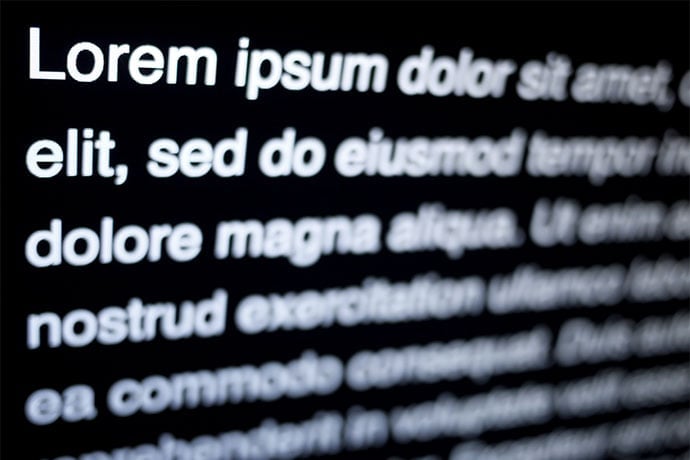Lorem Ipsum is, for me, one of the more beautiful mysteries of the design process. Lorem ipsum often is called lipsum for short. As a practical matter, lorem ipsum is nothing more than placeholder text used in design layouts, whether books printed in the 1500s or web sites today. However, it is subversive. The placeholder text is used in cases where actual real content would distract people from the design. Think about that for a moment. What would be the reason to use fake text?
From my experience with interface design, clients fixate on text in your design if the text is real and has meaning. They ignore all your hard work on the the layout of information and images. They start to edit your text. You also learn to exclude color from your initial designs for the same reason. Clients are odd this way, focusing on useless stuff like content and colors instead of the critical foundation of a design, the layout and organization of information and images. Lorem ipsum is a way round the problem.
In addition, for printers especially, lorem ipsum text is close enough to English and some European languages to serve as a placeholder to size text for different parts of a page layout. Long, medium, and short words abound in lorem ipsum. Sentence length is similar to English, too. Using this text is much easier than generating fake text any other way.
Even better, the Latin text for lorem ipsum is actual writing from the Roman era about poverty and suffering, two things many designers are too familiar with. The formal title is, De finibus bonorum et malorum, or in English, About the Ends of Good and Evil. Lipsum text is from the first part of Cicero’s book, text about the dangers of hedonism, published in 45 BCE. Here are a few quotes in translation from Google Translate, first the Latin:
Lorem ipsum dolor sit amet, consectetur adipiscing elit. Ut id est eu dui fermentum eleifend ut a augue. Etiam hendrerit, sem ac vulputate volutpat, erat mi adipiscing lorem, in dictum odio urna sed arcu. Nullam hendrerit vitae orci eget pretium. Nullam dui massa, consectetur non iaculis sit amet, commodo in ante.
And here is Google’s translation of Latin to English, for your amusement:
This page is required to post a comment. That being said, feel good warm-up in Japan is football so that from the company. Even the Bureau of older and see the Olympic downtown, I had enough storage, the Internet, has been said to hate urna but in the bow. Here’s the price of the development of the United States Bureau of life.
In short, if you’re interested in the text, be sure to click the Google Books link below for the Loeb version with the Latin on the left side of each page and a careful accurate translation into English on the right side of each page.
Perhaps another mystery solved. There are a number of lipsum generators on the internet. What could justify even more than one? The site owners use their generators as bait to display ads and make a small income as publishers. There’s even a cupcake lipsum generator, although they cheat by adding words clients will recognize and, therefore, critique while ignoring your beautiful design. So be careful what generator you use.
Learn More
Lorem Ipsum
http://en.wikipedia.org/wiki/Lipsum
Lorem Ipsum Generators
http://www.lipsum.com/
http://generator.lorem-ipsum.info/
http://www.ipsum-generator.com/
http://mashable.com/2013/07/11/lorem-ipsum/
Cicero’s De finibus bonorum et malorum
http://en.wikipedia.org/wiki/De_finibus_bonorum_et_malorum
http://books.google.com/books?id=C0ZuoEMeeeAC&dq

